acer palmatum trompenburg problem
djfarside
9 years ago
Featured Answer
Sort by:Oldest
Comments (32)
gardengal48 (PNW Z8/9)
9 years agodjfarside
9 years agoRelated Discussions
Baby Acer palmatum Sapling Care. Advice needed!
Comments (4)Hmm,I would've thought you're living in the best place to get advice Lol. I'll start the ball rolling to hopefully get more responses but must admit I've never grown an acer indoors.I don't think these plants are normally grown indoors unless you're gonna go down the bonsai route(of which I know nothing)They have the capablitiy to become a 10m tree and you will need to put it outside or at least a cold shed for the winter to induce dormancy(they need the rest)It may be possible to keep it indoors whilst small but even with pruning I think eventually it will be struggling for enough light(and space ha) Anyway,yes put it in a pot,the roots don't want to be exposed to open air,mildy acidic-neutral free draining medium.If you have a sunnier window that may help with the lighting it'll need when it gets bigger.The temp. is fine.Snip those shrivelled leaves at the top of the leaf stalk,you may or may not get a new leaf grow there.As I said unless you're going to dwarf this plant it will grow a lot bigger so the wire may be a waste of time. Sorry I can't help you more as it's unknown territory to me,but hopefully this'll spurn more replies...good luck!...See MoreBloodgood Acer Palmatum leaves turning brown
Comments (2)some up close photos of the branches with the brown leaves would help...See MoreAcer palmatum 'Red Pygmy' in full sun
Comments (9)Hmm. Mine, also in Maryland, gets full sun. It needs quite a bit of water not to curl and burn. I have 'Lozita' 'Red Crusader' 'Sherwood Flame' 'Maiku Jaku' 'Pacific Sprite' 'Okagami' 'Emperor 1' 'Trompenburg' 'Fireglow' 'Autrolinaere (SP?)' 'Corillium' 'Inaba Shidare' 'Sangu kaku' 'Shania' and a bunch others in extremely full sun. Sorry about some of the spellings. I'm tired & haven't the energy to correct myself. I find the shrub maples not to give a darn about my horrendous drought and sun. If they can survive here, they can survive up there....See MoreAcer Palmatum not thriving
Comments (1)"In California, consider the local soil and water; wherever azaleas are difficult to grow and suffer from salt buildup in the soil, Japanese maples will show burn on leaf edges. Give same watering treatment as azaleas -- flood occasionally to leach out salts." - Sunset 'Western Garden Book'...See Moregardengal48 (PNW Z8/9)
9 years agodjfarside
9 years agodjfarside
9 years agogardengal48 (PNW Z8/9)
9 years agodjfarside
9 years agodjfarside
9 years agohouzi
9 years agolast modified: 9 years agodjfarside
9 years agotapla (mid-Michigan, USDA z5b-6a)
9 years agolast modified: 9 years agodjfarside
9 years agodjfarside
9 years agogardengal48 (PNW Z8/9)
9 years agolast modified: 9 years agoMike McGarvey
9 years agodjfarside
9 years agogardengal48 (PNW Z8/9)
9 years agodjfarside
9 years agogardengal48 (PNW Z8/9)
9 years agodjfarside
9 years agotapla (mid-Michigan, USDA z5b-6a)
9 years agodjfarside
9 years agodjfarside
9 years agotapla (mid-Michigan, USDA z5b-6a)
9 years agoMike McGarvey
9 years agotapla (mid-Michigan, USDA z5b-6a)
9 years agodjfarside
9 years agodjfarside
9 years agoMike McGarvey
8 years agotapla (mid-Michigan, USDA z5b-6a)
8 years agoMike McGarvey
8 years ago
Related Stories

LANDSCAPE DESIGNProblem Solving With the Pros: How to Build a Garden in an Urban Canyon
Skyscrapers, noise and deep shade create an unlikely sweet spot for a timeless green retreat in New York City
Full Story
GARDENING GUIDES13 Japanese Maples for Shade
A surprising variety of these understory trees is waiting to make a statement in your shade garden
Full Story
TREES11 Japanese Maples for Breathtaking Color and Form
With such a wide range to choose from, there’s a beautiful Japanese maple to suit almost any setting
Full Story
GARDENING GUIDES5 Best-Behaved Trees to Grace a Patio
Big enough for shade but small enough for easy care, these amiable trees mind their manners in a modest outdoor space
Full Story
LANDSCAPE DESIGN7 Great Trees for Summer Shade and Fall Color
These landscape-pro faves straddle the seasons beautifully. Could one enhance your own yard?
Full Story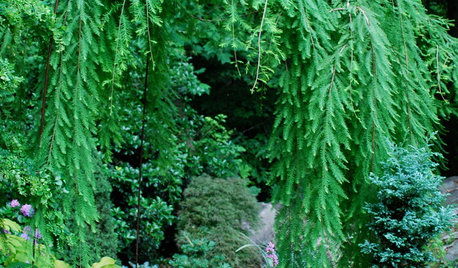
LANDSCAPE DESIGNThe Weepers and the Creepers: 10 Intriguing Trees for Your Garden
Bring something a little different to your landscape with a tree that dives, twists or crawls
Full Story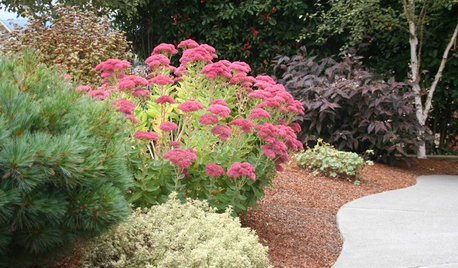
GARDENING GUIDESPacific Northwest Gardener's August Checklist
Deadheading perennials, cutting raspberry canes and preparing for the onion harvest keeps Northwest gardeners busy in August
Full Story
LANDSCAPE DESIGNDitch the Ordinary Ditch: Create a Realistic Dry Creek Bed
Here’s how to turn your water runoff system into an eye-catching accent for your landscape
Full Story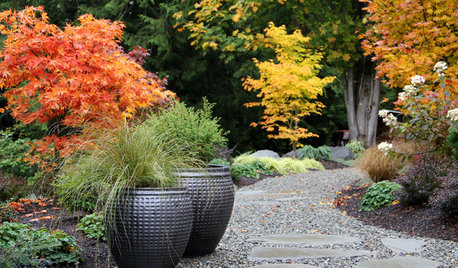
PLANTING IDEASGreat Garden Combo: Fall Foliage With a Contemporary Twist
This fiery autumnal display relies on simplicity and ample spacing to create a distinctive panorama
Full Story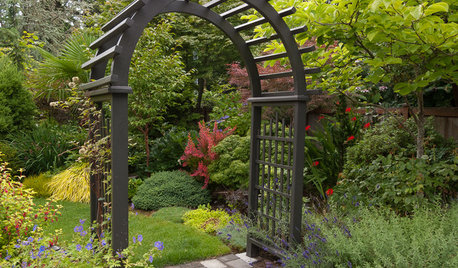
PLANTING IDEASGreat Garden Combo: 9 Plants for an Intriguing Entrance
Layer trees, flowers and shrubs around an archway to create the feeling of a year-round doorway to adventure
Full StorySponsored



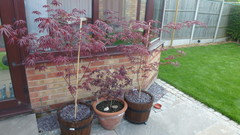



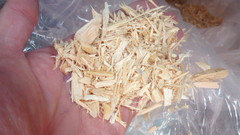


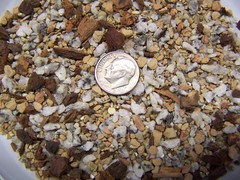
gardengal48 (PNW Z8/9)